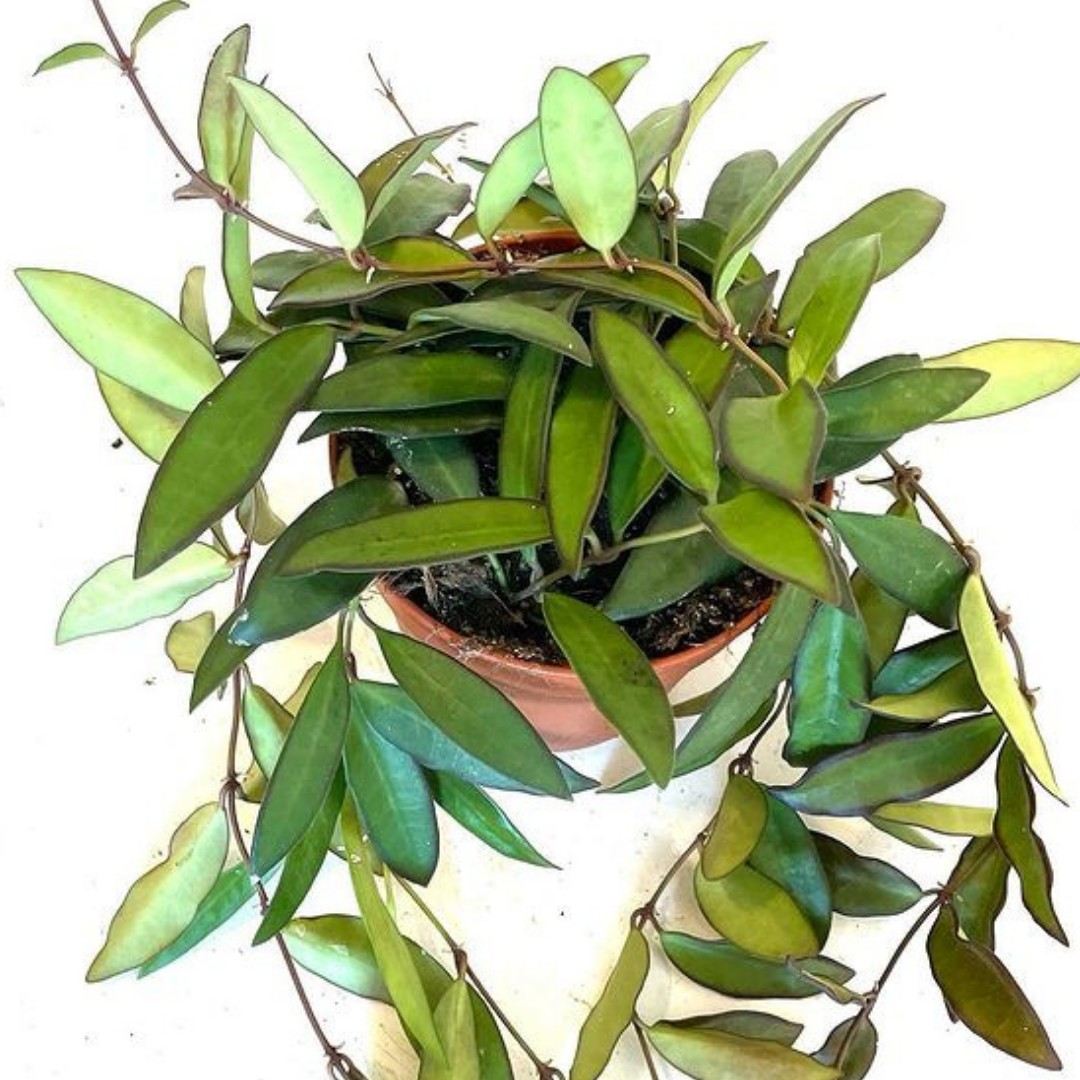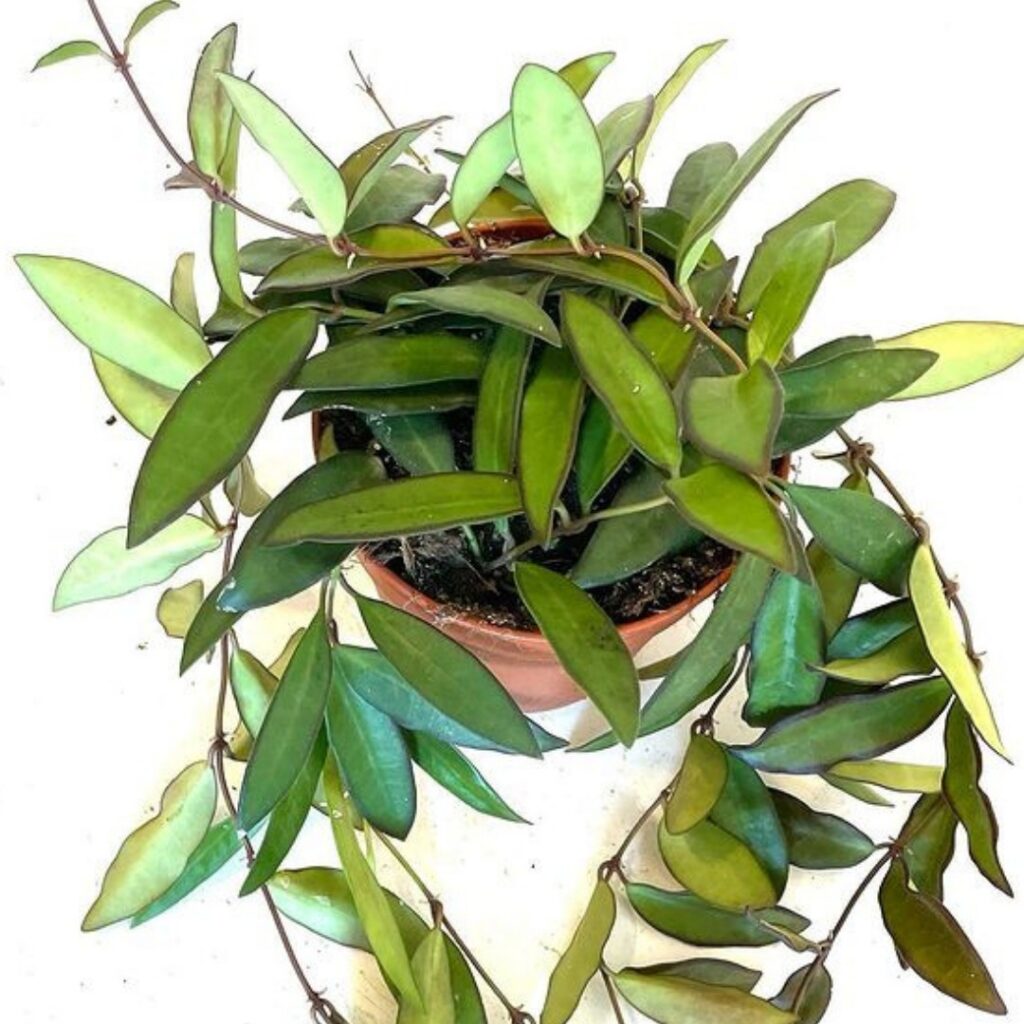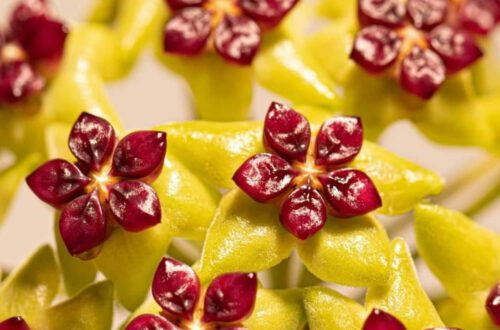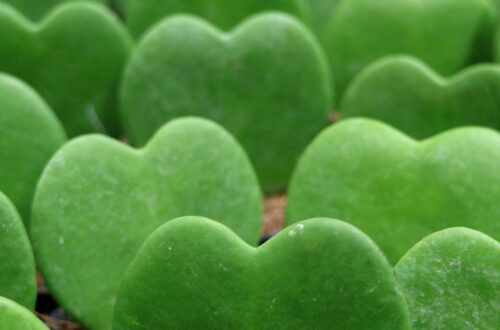
Hoya Rosita
Welcome to our guide to the Hoya Rosita all you need to know about care and propagation, including light, water, soil, temperature and humidity needs…
Hoya Rosita Care Summary
| Light needs: | Bright indirect sunlight. |
| Watering needs: | Check soil weekly |
| Fertilizer: | Feed once a month in spring and summer. |
| Soil: | Loose, well-draining. |
| Humidity: | 40-60%. |
| Temperature: | 65 to 80°F (18 to 27°C). |
| Where to buy: | Try our list of Rare Plant Shops. |
| Common issues: | Overwatering. |
Introduction
Hoya Rosita is a gorgeous vining succulent with elongated green leaves and maroon edges. It is a hybrid of the hoya wayetii x hoya DS-70. It is native to Southeast Asia and Australia; it grows best in warm, humid environments. You do not need to provide it with extensive care and it can grow well even under some neglect.
See also: Hoya Soil, Hoya Krimson Princess, Hoya Fungii, Hoya Lauterbachii, Hoya Callistophylla, Hoya Curtisii, Hoya Shepherdii, Hoya Imperialis, Hoya Sunrise.
Tip: we recommend Etsy for buying plants. Look for the best rated seller you can, and try to buy as close to your home as possible so the plant does not travel too far.
A note about affiliate links: when you buy a plant, pots, soil, or other goods through links on this article we sometimes earn a commission. It doesn’t cost you anything, but it really helps us out if you do use them. Thanks a lot! An example of this is if you buy a plant on Etsy using this link. Read our privacy policy for more information. Thanks again.
Hoya Rosita Light Needs
Bright, indirect light assists it in flowering and maturing early. Since it is an epiphyte, it is used to growing under tree shade. Placing it under scorching sunlight increases the risk of leaves burning, so keep it away from direct afternoon sunlight.
How Often To Water
Keep it slightly moist. If in doubt underwater it, they can get root rot easily. Make sure you check the soil before you water again do not just water them on a schedule, but you can check the soil regularly (each week).
Reduce the watering intensity during the winters and always check the soil condition before watering.
Fertilizer
It does not need a lot of fertilizer to show results. Applying fertilizer once a month during the growing season of spring and summer greatly boosts the growth.
Hoya Rosita Soil
You should get loose, well-draining soil that does not retain water to prevent waterlogging. Moreover, using peat moss and perlite works great in providing adequate drainage to the plant, some orchid bark is good too as they grow in tree bark in the wild.
See our guide here: Hoya Soil.
When to Repot
This plant has a shallow root system which means you do not have to repot it frequently. Move it only when you see the roots emerging from the drainage holes. However, it takes at least 2 to 3 years for this to happen, saving you a lot of time and effort.
Humidity
Although it requires a humidity level between 40% to 60%, the thick leaves store enough water to survive during low humidity too. In drier areas, you may need to use a humidifier or mist the plant frequently to maintain the humidity level.
Temperature
The ideal temperature for growing this tropical houseplant is between 65 to 80°F (18 to 27°C) in the daytime. Try to keep them above 10°C (50°F) as a minimum temperature.
How to Propagate Hoya Rosita
Stem cutting is the most common method of propagation. You want to take a cutting with about 4 sets of nodes/leaves, then take the leaves off the bottom two nodes. Then put the cuttings in water to root, with the naked nodes under the water and the leaves out. Once rooted in a couple of months, put them in soil to continue rooting. They should put out new leaf growth soon, and at this point you can treat it as a juvenile plant.
For more on hoyas see our hoya category with all our hoya care guides.
Hoya Rosita Vs Wayetii
The rosita is really similar to the wayetii as it is a hybrid of the wayetii and tsangii.
Hoya Rosita USDA Zone
They can live outdoors in zones 10-12.
Hoya Rosita Flower
They have half crescents of small raspberry colored round flowers.
Hoya Rosita Flower Smell
The have sweet, floral scented flowers.
Why Do Hoya Rosita Leaves Turn Yellow?
Yellow leaves occur from overwatering, make sure the soil dries out each time before watering it again.
Is Hoya Rosita Poisonous?
They are not toxic to cats and dogs
Where To Buy
Try our list of Rare Plant Shops.
FAQs and Common Problems
Besides occasional pest attacks and root diseases due to overwatering, it does not show any serious problems. Observe your plant daily and spray it with neem oil if you see any pests. Check the soil condition by inserting your finger into the soil, and water only when it feels dry.
Is Hoya Rosita toxic to cats?
It is not toxic to cats or humans.
How big do Hoya Rosita get?
Hoya Rosita consists of long vines that may grow up to 3 feet tall. Leaving the plant out at a temperature lower than 55°F may stunt the growth.
Additional Resources
Buy: we recommend a digital thermometer hygrometer (amazon affiliate link) to measure humidity.
Other Articles You Might Like
There you have it, here ends our guide to this beautiful plant. You might also like our other articles:
Hoya Soil, Hoya Krimson Princess, Hoya Fungii, Hoya Lauterbachii, Hoya Callistophylla, Hoya Curtisii, Hoya Shepherdii, Hoya Imperialis, Hoya Sunrise.
Please follow us on Instagram and Pinterest for regular plant updates and occasional plant giveaways.





